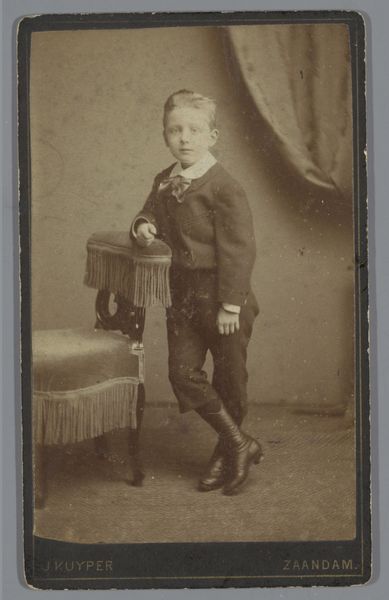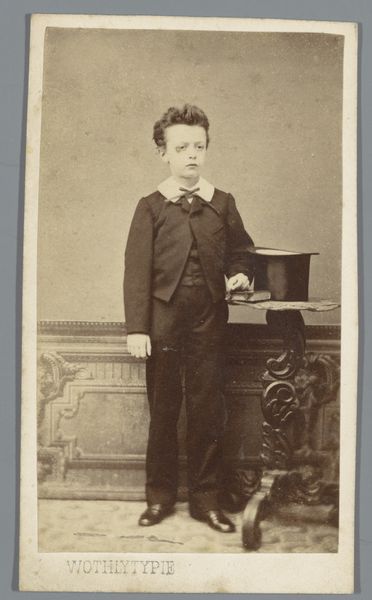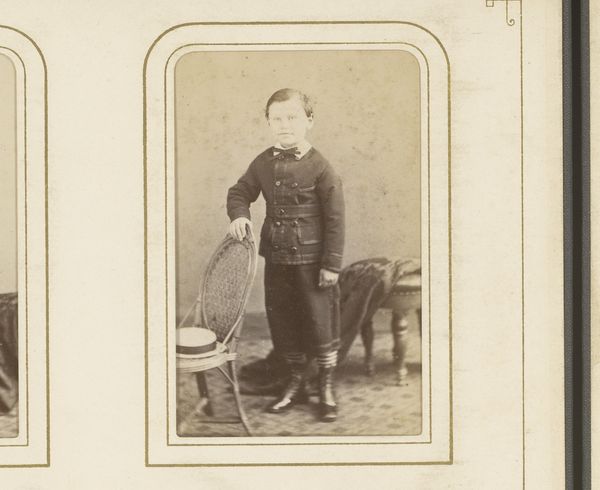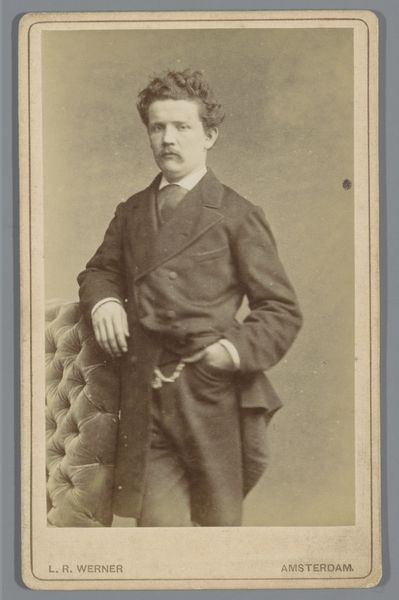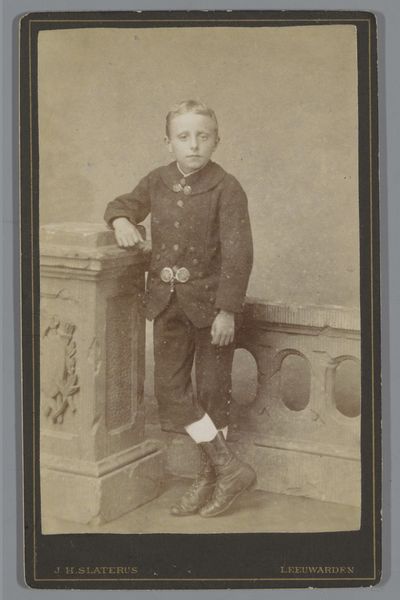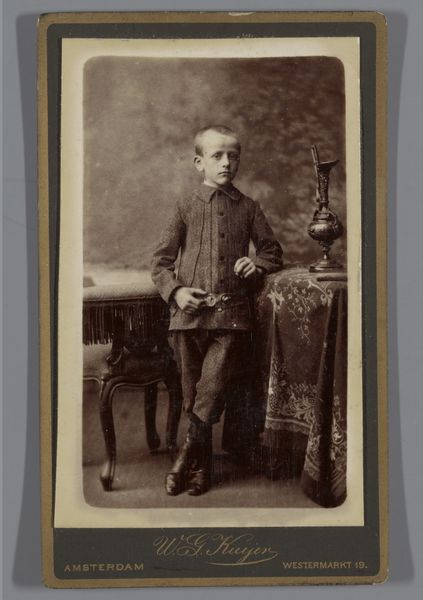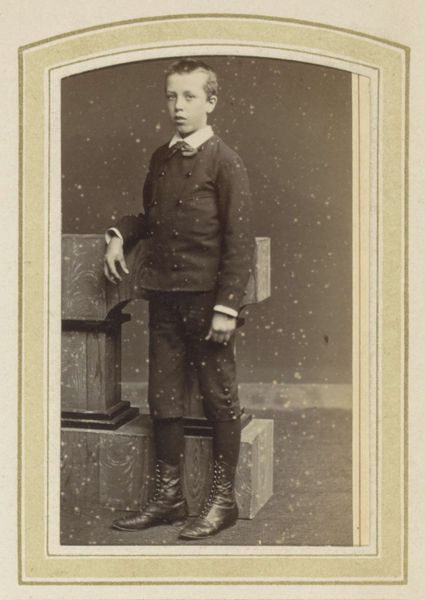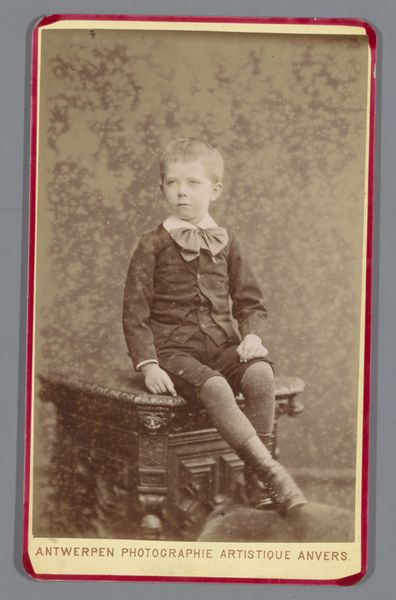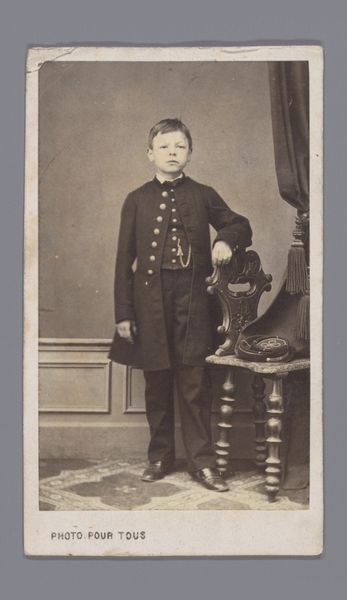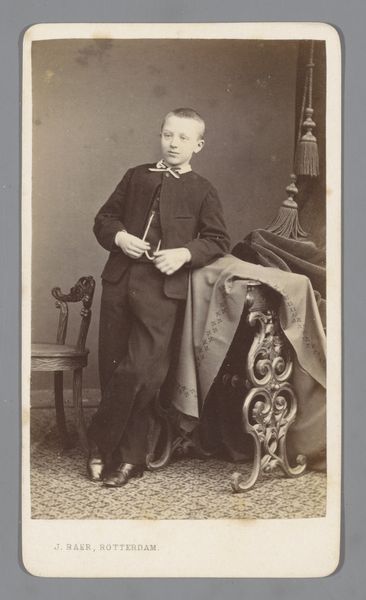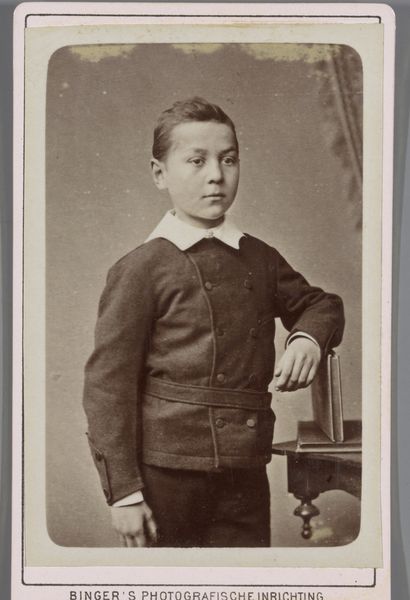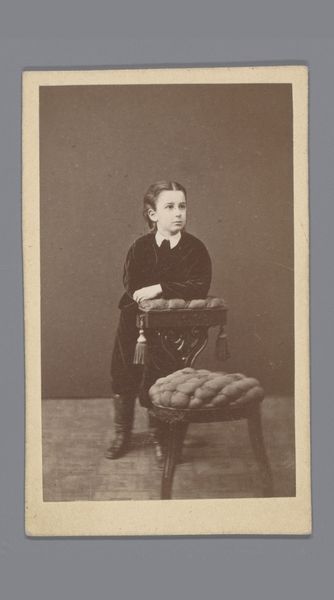
photography, gelatin-silver-print
#
portrait
#
impressionism
#
archive photography
#
photography
#
historical photography
#
historical fashion
#
gelatin-silver-print
#
19th century
#
genre-painting
Dimensions: height 87 mm, width 97 mm
Copyright: Rijks Museum: Open Domain
Curator: This gelatin silver print, taken between 1880 and 1890 by Albert Greiner, is titled "Portret van een onbekende jongen in een interieur"—Portrait of an Unknown Boy in an Interior. The work currently resides here at the Rijksmuseum. Editor: My first impression is how somber it feels. The monochrome tones and the boy’s serious expression evoke a sense of a bygone era, laden with the rigid expectations placed upon children. Curator: Absolutely. And those expectations are rooted in a specific class structure. Note the formal attire, the perfectly tailored suit, the hat… these are all markers of privilege, indicators of a young boy groomed for a particular role in society. His very posture—leaning with affected casualness against that elaborate chair—speaks to a cultivated, performative masculinity. Editor: It’s a very staged scene, indeed. The ornate chair and draped background function almost as props, symbolic of wealth and status. Consider the hat he’s holding too, a symbol itself; a marker of civility and belonging to a specific societal stratum. It all contributes to this carefully constructed image. But what about the unknown identity? What power dynamics do we miss out on due to that unknown status? Curator: The absence of a named identity further highlights the issues around representation and visibility. Whose stories get told and preserved? Here, this boy stands as an example of bourgeois youth but he is stripped of individuality. The archive often perpetuates erasures, reminding us to ask who is missing from these historical records and, most crucially, why. Editor: And while the identity remains a mystery, the symbols endure. Those symbols speak to a continuous desire for belonging and aspiration. I am interested to analyze what parts of the present inherit those ideals as it informs fashion, wealth, and class divisions today. The photographic process itself creates this memory, solidifying fleeting moments into artifacts that become part of our shared, cultural lexicon. Curator: Yes, the layering of gazes across time, indeed. Each element of this photograph encourages a dialogue. Considering the gaze, the performativity, and those elisions surrounding his identity encourage discussions of race, class and power. Editor: Thinking about these contextual symbols definitely prompts consideration about what has remained, what has been discarded and how each component influences cultural visual perception now. Thanks to the image and its symbolic density, so much remains up for discourse.
Comments
No comments
Be the first to comment and join the conversation on the ultimate creative platform.
